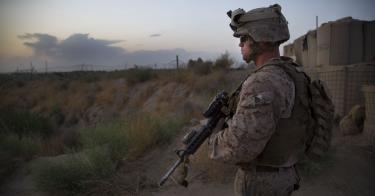After nearly 17 years of war in Afghanistan, President Trump this week proposed a pragmatic, purposeful approach to the conflict that will work to protect and advance U.S. interests in that part of the world.
Here’s why:
First, it has a counterterrorism focus. The key aim is to help prevent Afghanistan from becoming a safe haven for terrorists as it was for al-Qaeda under the Taliban’s rule, leading to the horrific 9/11 attacks.
This means that we’ll work with Afghan, NATO and other partners to secure the country from becoming a place where terrorists (like ISIS) can plan, train and operate, especially against the United States.
This is as critical to U.S. security as it is to that of other nations; 20 of the nearly 100 U.S. government-designated foreign terrorist organizations are present in the Afghanistan-Pakistan region of South Asia, according to the Pentagon.
Second, there is a regional strategy. This is essential, especially in regard to neighboring Pakistan, where terror groups such as the Afghan Taliban and the Haqqani Network are able to find refuge.
As I’ve written previously on these very pages, you can’t get Afghanistan right without getting Pakistan right.
The president also brought India into the regional strategy. India, the world’s largest democracy, second most populous nation and a major power in its own right, has a vital interest in what happens next door in Afghanistan.
India has long been terror-afflicted, largely coming from the territory of rival Pakistan, but Afghanistan could become a significant staging ground for violent Islamist extremist attacks into India, too.
New Delhi understands this — and should pitch in.
Third, there will be no nation-building. The U.S. goal is to help Kabul build security forces to stabilize and (hopefully) pacify the country which faces a Taliban-led insurgency; we shouldn’t try to shape it into a Western-style democracy.
However well-intentioned that policy was, we should be grateful it’s done with.
That said, as Afghanistan’s friend, the United States and other partners (India and Europe for example) will work with Kabul to assist the country politically, economically and socially in support of our common interests.
Fourth, there are no timetables. Timetables clearly have their place in that they can focus a project, but they can also be counterproductive, especially in military operations; politically-driven schedules give the enemy decisive insights into our plans.
Remember the anecdote of a Taliban prisoner who said, “The Americans have the watches, but we (the Taliban) have the time”? We don’t want the Taliban to think they can just wait out a well publicized U.S.-NATO withdrawal.
This could mean that we’re in Afghanistan battling the spread of violent Islamist extremism for a while. Having a U.S. military presence in that region isn’t a bad idea strategically in my estimation, either.
I would have liked to have heard more about Iran, another Afghanistan neighbor which is involved there in nefarious ways, and Russia, which has been allegedly supporting the Taliban against U.S. interests.
Sure, critics are bemoaning a lack of details in the speech, but I’m comfortable with that at this point. The critical step was to settle on a good, solid strategy going forward which furthers U.S. interests.
Thankfully, we now have that.
This piece originally appeared in The Boston Herald



